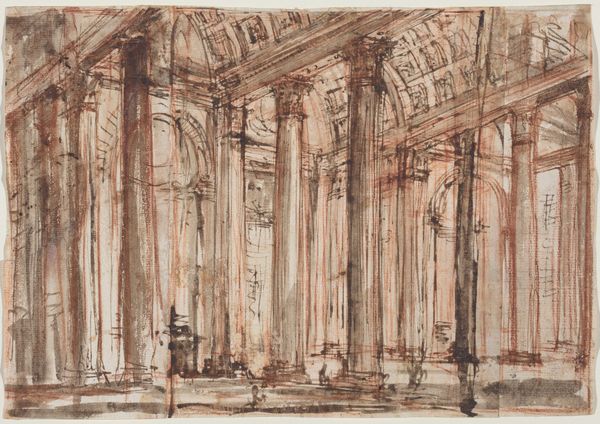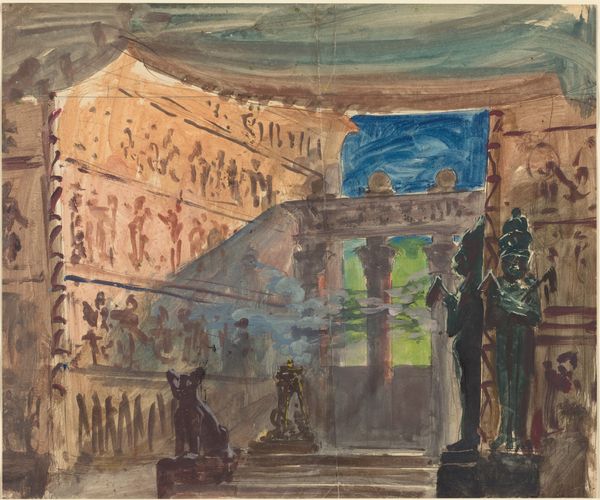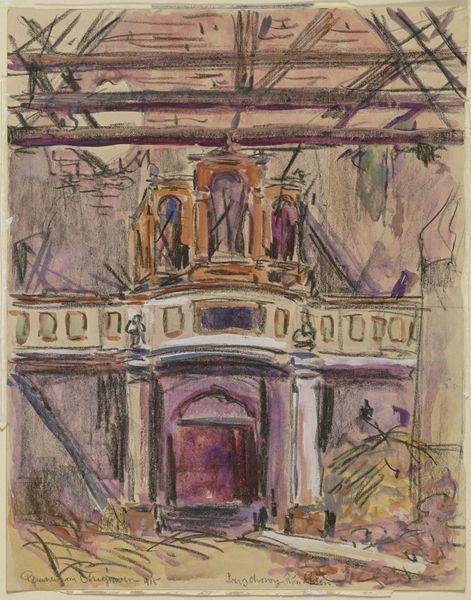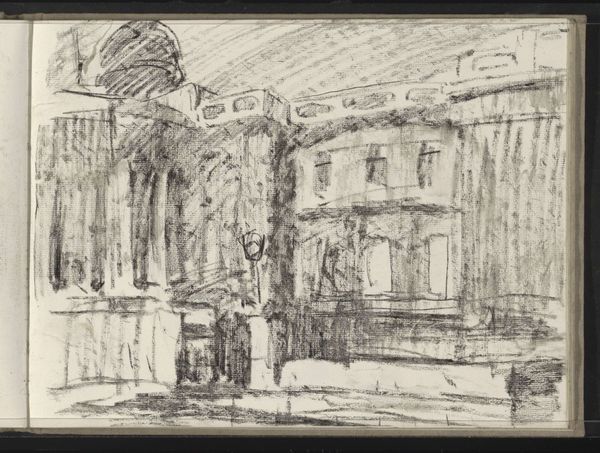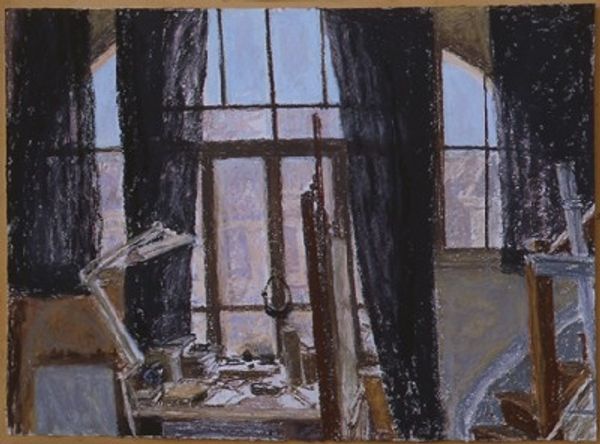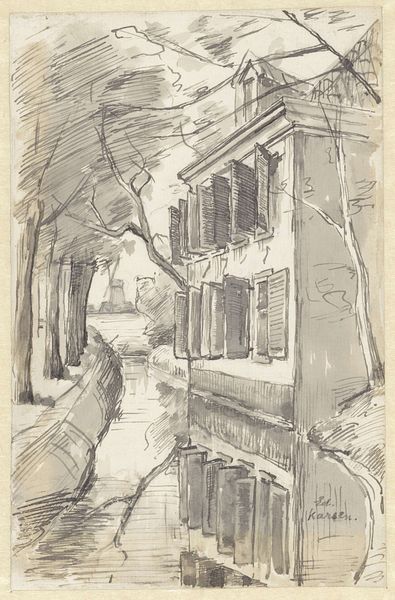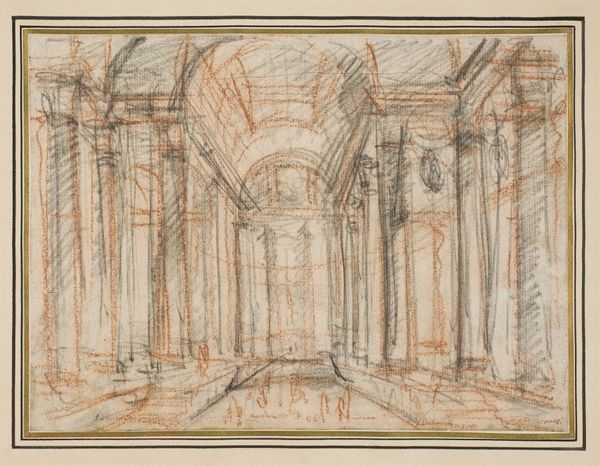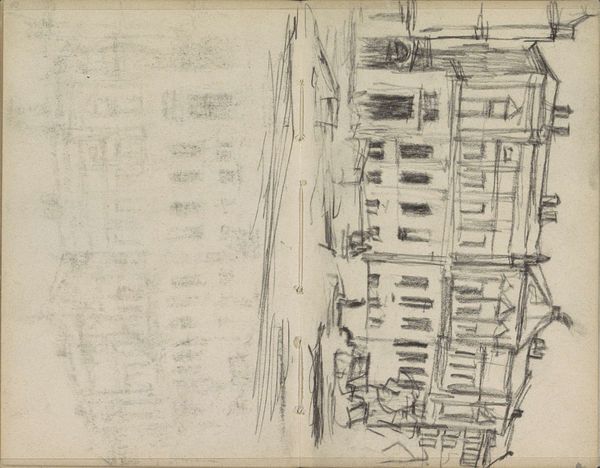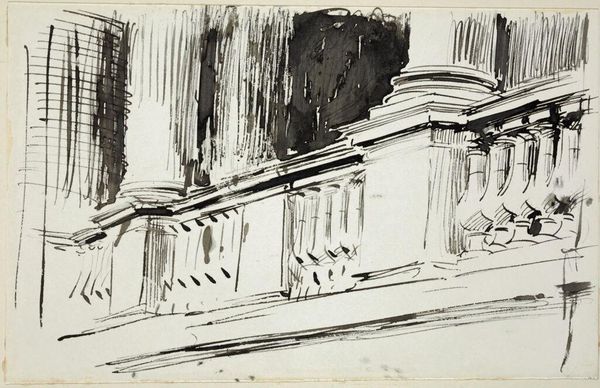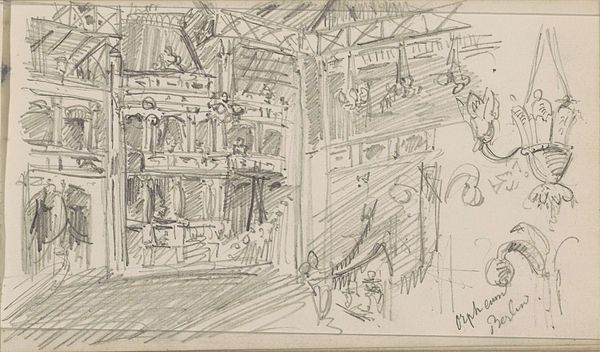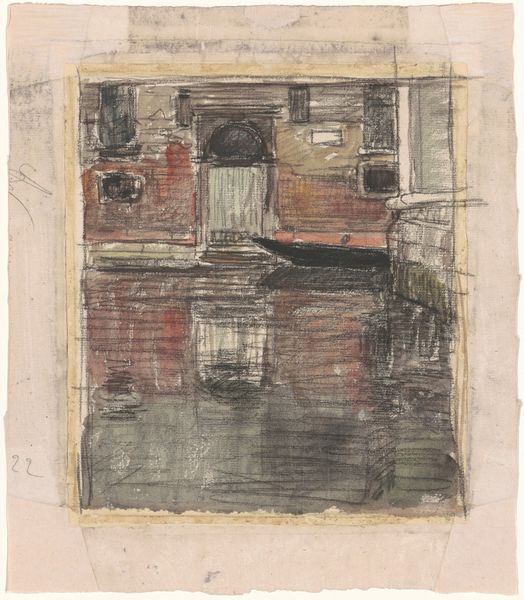
Dimensions: 17 1/2 x 22 1/8 in. (44.5 x 56.2 cm.)
Copyright: Public Domain
Editor: Here we have Perkins Harnly's "14th Street Theatre," created in 1940, currently residing at the Metropolitan Museum of Art. It appears to be a watercolor and drawing mixed media piece. I find the somewhat faded color palette intriguing. The imposing building depicted feels slightly… melancholy, almost ghostly. What do you see in this piece? Curator: The "ghostly" impression you get is interesting. The building, while rendered with classical architectural details, feels slightly off-kilter, perhaps hinting at a commentary on civic institutions during that time. Editor: How so? Curator: Well, consider the date: 1940. This was a time of immense social and political upheaval globally, right before the US entered World War II. Harnly's choice to depict a theater, traditionally a space for public gathering and discourse, as somewhat dilapidated might be interpreted as reflecting a sense of unease or questioning the stability of social structures. It appears to say 'civic', what message do you think the artist intended? Editor: Hmm, the slightly faded signage, like “CIVIC,” now reads differently to me! Was Harnly perhaps suggesting a gap between the grand ideals these institutions represent and their actual state or role? Curator: Precisely. The fact that it’s rendered in watercolor, often seen as a delicate and ephemeral medium, adds another layer to that reading. Watercolors, with their fluidity, can be very expressive of fragility and instability. Think about how artistic representations of civic institutions were shaped by broader political anxieties. Editor: I hadn't thought of it that way! Now the piece seems less about simple realism and more about Harnly's commentary on the role of public spaces during uncertain times. It really makes me consider how the art is a product of, and a reaction to, its political context. Curator: Absolutely. Analyzing a work like this allows us to understand how artists can subtly engage with the anxieties of their era, embedding critiques within seemingly straightforward representations. It helps one question how power shapes cultural narratives within imagery and representation.
Comments
No comments
Be the first to comment and join the conversation on the ultimate creative platform.
